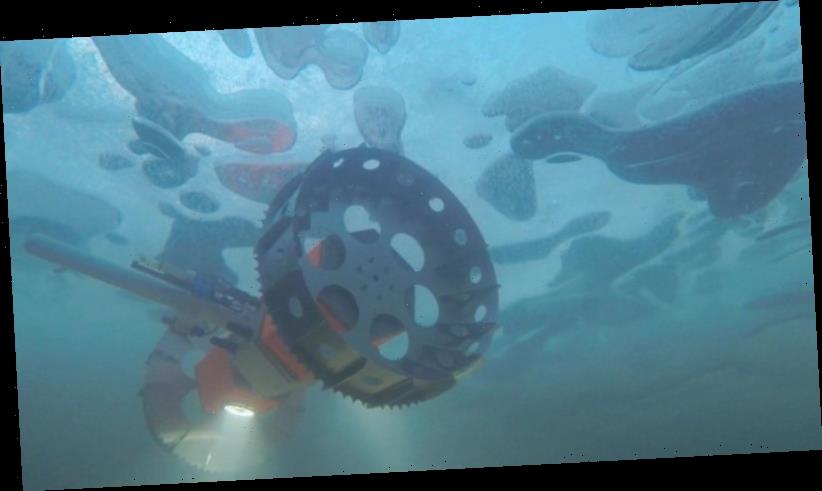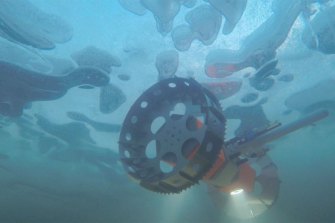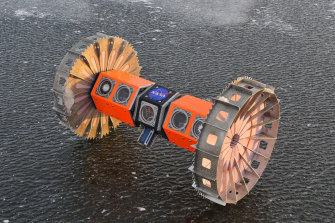Designing a rover to trundle over the arid surface of Mars is challenging enough, but building a robot to explore the ocean depths of faraway moons is altogether trickier.
Scientists believe that watery satellites such as Enceladus — which orbits Saturn — or Jupiter's moon Europa, hold the best conditions for finding alien life in the Solar System. While upcoming Mars missions may uncover fossils of ancient life forms dating back billions of years, living organisms could still be thriving in the seas of volcanically active moons.
The rover floats then walks beneath the surface.Credit:NASA
Hunting for extraterrestrial life in alien oceans is fraught with problems, not least because any probe must navigate solo beneath ice sheets that could be up to 19 kilometres thick, through which no signal could penetrate.
But now NASA has developed its first aquatic rover which can drive upside down under the sea ice, and is due to begin testing in the Antarctic.
Dubbed 'Bruie', which stands for Buoyant Rover for Under-Ice Exploration, it has been developed by NASA's Jet Propulsion Laboratory (JPL) in Pasadena and been shipped to Antarctica for testing.
Kevin Hand, JPL lead scientist on the Bruie project, believes Europa and Enceladus are the best chance of finding life. "The ice shells covering these oceans serve as a window into what's below, and the chemistry of the ice could help feed life within those oceans," he said.
Bruie will spend the next month testing its endurance in the icy waters near Casey Station, Antarctica.
"On Earth, the ice covering our polar oceans serves a similar role, and our team is interested in what is happening where the water meets the ice."
Three feet long and equipped with two rigid wheels to grip the underside of the ice-sheet, the floating rover can take images and collect data at the crucial region where water and ice meet; the ice-water interface.
"We've found that life often lives at interfaces, both the sea bottom and the ice-water interface at the top," added lead engineer Andy Klesh.
"Most submersibles have a challenging time investigating this area, as ocean currents might cause them to crash, or they would waste power maintaining position. Bruie, however, uses buoyancy to remain anchored against the ice and is impervious to most currents."
The rover can also power down, turning itself on to take measurements, meaning it could spend months observing conditions under the ice.
Over the coming weeks, scientists will drill holes into the ice and send the tethered rover down to test its suite of gadgets, including two high-definition live cameras. The rover will also carry several instruments to measure parameters related to life, such as dissolved oxygen, water salinity, pressure and temperature.
Work on Bruie will continue until it can survive under the ice for months at a time, remotely navigate without a tether and explore the ocean at greater depths.
The Telegraph, London
Source: Read Full Article


